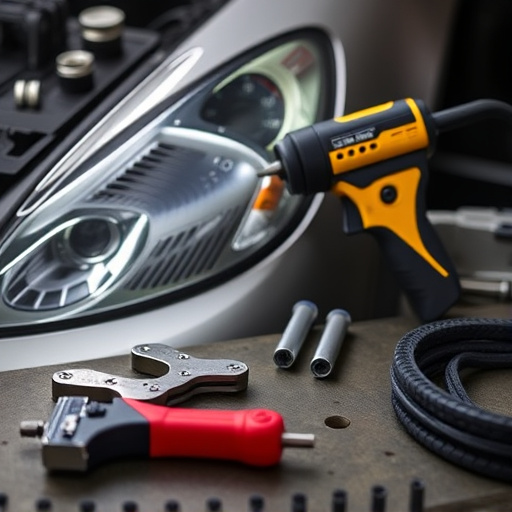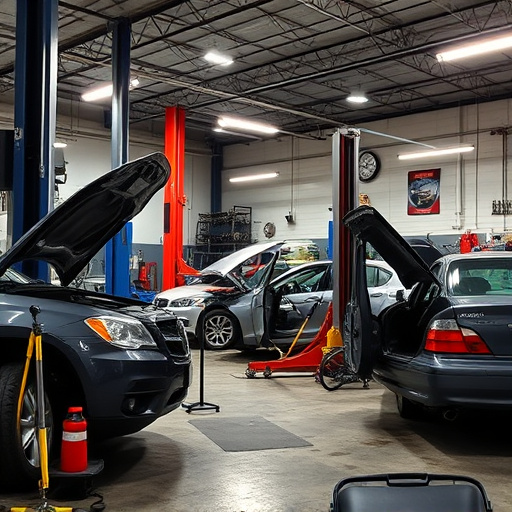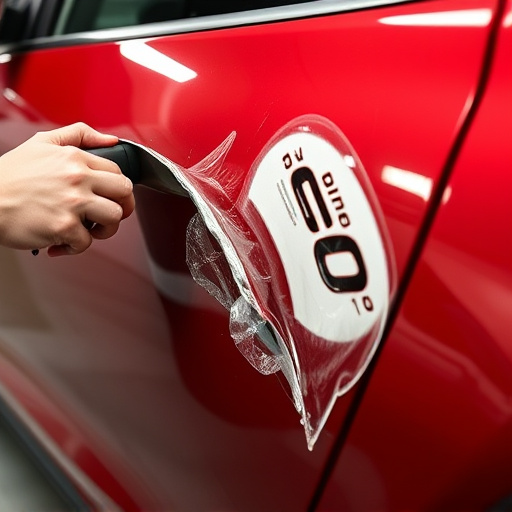Mercedes brake assist recalibration optimizes anti-lock braking system performance, enhances driver safety during emergency stops, and prevents false activation warnings. This process involves adjusting sensors and control units using diagnostic tools for accurate wheel speed detection. Recalibration boosts vehicle roadworthiness, improves driving confidence, streamlines repairs, minimizes auto painting, and extends Mercedes lifespan, making it a cost-effective step for smooth operation. Perform recalibration with specialized tools while parked on a level surface, testing brakes afterward; consult a specialist if uncertain.
Mercedes owners often praise their vehicles’ advanced safety features, including the Brake Assist system. However, false activation warnings can disrupt driving experience and lead to unnecessary worry. This article delves into the solution: Mercedes brake assist recalibration. We’ll explore how this process prevents false alerts, outlines its benefits, and provide a step-by-step guide to ensure your vehicle’s braking system operates seamlessly.
- Understanding Mercedes Brake Assist Recalibration
- Benefits of Preventing False Activation Warnings
- Step-by-Step Guide to Recalibrating Your Brakes
Understanding Mercedes Brake Assist Recalibration

Mercedes Brake Assist Recalibration is a critical process that adjusts and optimizes the performance of the vehicle’s anti-lock braking system (ABS). This advanced technology plays a pivotal role in enhancing driver safety, especially during emergency stops. By recalibrating the brake assist system, mechanics can ensure that it accurately detects wheel speed changes, which helps prevent false activation warnings.
This process involves sophisticated diagnostic tools to analyze and adjust various sensors and control units within the braking system. It’s akin to fine-tuning a high-performance machine, ensuring every component works in harmony for optimal results. Whether it’s a Mercedes Benz collision repair or a simple scratch repair, understanding and executing this recalibration correctly is essential for maintaining the vehicle’s safety features and overall performance on the road.
Benefits of Preventing False Activation Warnings

Preventing false activation warnings from Mercedes brake assist systems offers numerous benefits for drivers and vehicle owners alike. By recalibrating these systems, drivers can experience a more responsive and accurate braking performance, enhancing overall safety on the road. False alerts can be frustrating and distracting, leading to potential hazards if the driver’s focus is momentarily shifted. With proper recalibration, these warnings become reliable indicators of actual brake issues, allowing drivers to take appropriate action promptly.
This process not only improves driving confidence but also ensures that vehicle repair services are more targeted and efficient. Auto painting and general vehicle repair work can be minimized as a result, saving time and money for owners who might otherwise face frequent false alarms or unnecessary maintenance. A well-maintained brake system, thanks to recalibration, contributes to the overall longevity of the vehicle, making it a smart step in keeping your Mercedes running smoothly.
Step-by-Step Guide to Recalibrating Your Brakes

Recalibrating your Mercedes brake assist system is a straightforward process that can help eliminate false activation warnings, enhancing your driving experience and vehicle safety. Here’s a step-by-step guide to help you through it. Begin by ensuring your vehicle is parked on a level surface with the engine off. Next, locate the brake pedal and the corresponding sensor—usually found near the master cylinder. Using specialized tools designed for Mercedes vehicles, initiate the recalibration process. This involves sending precise signals to the sensor to adjust its sensitivity and response time.
Follow the manufacturer’s instructions carefully, as slight variations may exist between different Mercedes models. During the process, you might need to temporarily remove or reattach certain components to ensure proper signal transmission. Once complete, test your brakes by gently pressing on the pedal to verify the system’s functionality and responsiveness. If done correctly, false activation warnings should be a thing of the past, ensuring smoother driving and increased peace of mind while behind the wheel of your Mercedes. Remember, seeking assistance from a reputable car repair shop or automotive body work specialist is key if you’re unsure about any part of the procedure.
Mercedes brake assist recalibration is a powerful tool for ensuring your vehicle’s safety and performance. By preventing false activation warnings, this process allows drivers to navigate with confidence, knowing their brakes are responding accurately to every situation. With a simple, step-by-step guide, anyone can master this technique, enhancing their driving experience and the overall reliability of their Mercedes.














